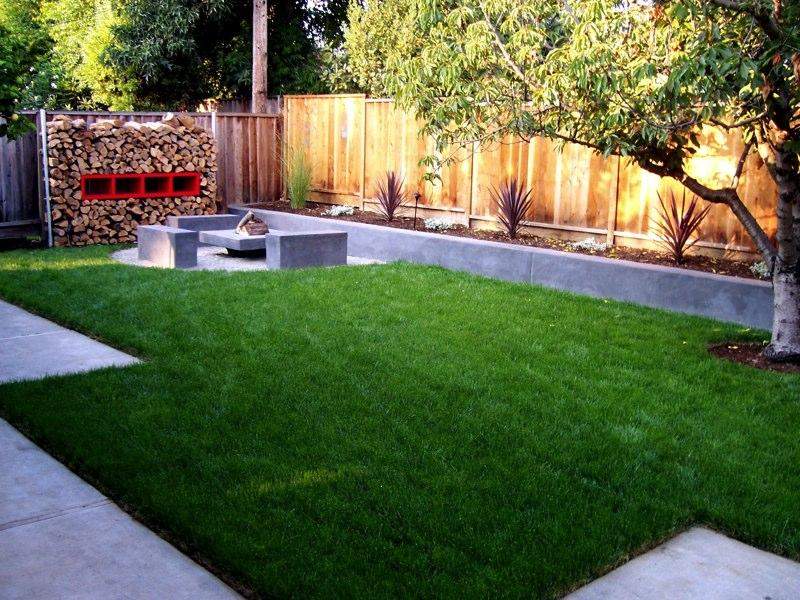Lawn care for dummies.
Your neighbor makes it look so easy. Effortless, almost. His lush, green, thick lawn. The sort of lawn you aspire to. And then there’s your lawn. It’s thin, pale, and weedy. And frustrating! You had sprinklers put in, and you water it every day (every other day if the City of Missoula is asking). You’ve hired a lawn care service to mow it. You even pay them to spray it and fertilize it to the point that you come home to flags warning you “KEEP OFF. PESTICIDE APPLICATION” all in the name of killing those weeds. Sure, it perks up when they spray it, but in a few weeks, new weeds pop up, the grass looks bad, and you’ve got to call them back.
You’re looking at your neighbors lawn, wondering what the difference is? Granted, he’s retired and you’re not, so perhaps he spends more time on it that you realize, while you’re at work all day. What’s more likely is he just knows the old school tricks we seem to have lost track of in this day and age of chemical lawn care and instant gratification.
The organic lawn care approach.
Before the advent of synthetic fertilizers and pesticides, lawn care was simple: you didn’t. This was partly because many folks didn’t even have a lawn – until the middle of the last century, lawns were generally considered a luxury. Widespread marketing to and “lobbying” of the rising middle class by the chemical and agricultural industries drove the rise of the American lawn as we know it today.
Anyone with a little time on their hands can do a quick search online and read a multitude of articles detailing just what detrimental effects synthetic fertilizers and pesticides have on our environment and our health. Without question, these things are bad. This is why many Canadian provinces and even US municipalities are beginning to ban pesticides.
Well, what does this mean for our old retired neighbor with the best lawn on the block? How is he doing it?
Water less often.
Once established, your lawn doesn’t need to be watered every day. Here in Missoula, this is a topic that’s near and dear to my heart. We are an arid climate, receiving only about 12″ of precipitation each year. If you must have a lawn (and so far, you still have this right, unlike many parts of the country suffering from worse drought than us), PLEASE DON’T WATER IT EVERY DAY! Not only is this wasteful and expensive, you’re actually preventing your lawn from reaching it’s full potential. Frequent watering encourages shallow root development, which means when the upper layer of soil dries out, so do the roots. Infrequent watering does the opposite, and trains the grass roots to go deep into the ground in search of water. A good rule of thumb is to water only when your grass appears stressed, which manifests as a silvery-green sheen on your lawn. A well established and properly irrigated lawn should only need water every couple of weeks except in the hottest parts of the year.
Lawn care nutrition.
Just like your body, your lawn will perform it’s best with proper nutrition. I’m not a horticulturist, so I won’t delve into the science behind plant nutrition, but I can tell you from years of experience in Missoula, hands down the best method I have found for feeding your lawn doesn’t come in a bag or a tank. It comes in the form of high quality compost. Compost topdressing is spreading an even layer of compost over your lawn, which comes with a plethora of benefits. We use an Eco Lawn Applicator for professional results, but Eko Compost here in Missoula will rent you a manual spreader that looks sort of like a lawn roller made from a steel mesh, if you want to tackle the task yourself. You can also use the good old shovel and wheel barrow method to broadcast compost over your lawn. The photo below show the difference topdressing your lawn with compost can make. The photo on the left is a before shot, and the photo on the right is after topdressing.
If you’ve been treating your lawn with chemicals in the past, I strongly suggest you aerate your lawn before topdressing. Chemical applications tend to sterilize the soil by killing off the beneficial microbes, bacteria, nematodes, earthworms, etc. that all live in the dirt and collectively comprise our soil. There is a difference between dirt and soil, at least in my mind. Soil is full of life, and dirt is dead. It’s that life in the soil that naturally aerates it and makes nutrients and minerals bioavailable for plants to use, while at the same time building a healthy layer of organic material (known as the O Horizon in soil scientist talk) that helps to retain water, build soil structure, and give your soil a nice dark color. Dead soil, or dirt, will compact over time when we kill off the microbial community, making it difficult for grass roots or water to penetrate the ground, thus creating conditions difficult to grow anything in except advantageous weeds. If you hire a mowing company, often this exacerbates the problem, as the large ride on top mowers further compact the soil. Have dogs? Yes, they tend to compact areas of your yard also. Core aeration removes plugs of soil, which helps loosen and aerate the soil and gets the compost a little deeper into the ground when you topdress, speeding up the process a bit.
This is a good time to consider overseeding your lawn as well. Any thin areas or bare spots can be seeded heavily before compost topdressing. Overseeding does a couple of things. First, it replenishes your lawn with a supply of new grass shoots. Just like any living thing, the grass in your lawn ages and eventually dies off, so a good supply of newer grass plants will keep your lawn looking great. Second, it builds turf density, which is very important for reducing weed problems in your lawn. It basically crowds them out. I’ll have another post just on weeds in your lawn and what that can tell you about your soil, how to control them naturally, etc., so follow our blog if you’re interested to learn more.
Mow high and mow often.
The final important key to a great looking lawn is to mow it. Alot. Set your mowing deck as high as it will go, ideally 3 1/2″ – 4″ . This follows the same principle as building turf density – we are trying to crowd out, and in this case, shade out weeds. The larger leaf surface area versus a lawn mowed at, say 2 “, will also lead to more photosynthesis (it’s how plants make food), in turn creating a stronger and more robust plant. And mow it regularly, weekly or more if possible. You never want to remove more than about 1/3 of the leaf at once, or the plant won’t be able to photosynthesize enough food to support it’s root structure, and some of it will die. If you do this repeatedly, eventually it’s roots will end up shallow and depleted of energy stores, leaving a plant vulnerable to dehydration and malnutrition. It doesn’t hurt to have a sharp mower blade, either.
Additionally, I recommend that you leave the grass clippings on the lawn rather than pick them up. They will dry up and disappear quickly, usually within hours, and are an important source of nitrogen and other nutrients for your lawn. The microbial population and earthworms also benefit, and the grass clippings act as a mulch that helps prevent water evaporation and keep the soil cooler. If you’re mowing your own lawn, it’s also less work for you.
So, let’s get back to your neighbor. What is he doing to make such a great looking lawn look so easy? He’s taking care of it the old school way, with a little bit of hard work and a little bit of smarts. He knows that some things you have to work for, and a beautiful, safe and natural lawn is one of them. Before chemical lawn care and giant lawn mowers and mowing companies existed, people knew that feeding their lawns naturally with compost, manure, or lawn clippings built the soil and developed a healthy crop of grass plants. So, your neighbor hauls has a load of compost delivered each year that he uses to topdress his lawn with. He’s also watering his lawn only as needed rather than setting the clock on the sprinkler system and forgetting it. And finally, he mows it, generally once or twice per week. That’s it, folks. Simple and effective natural lawn care. Save yourself some money this year and try it…I think you’ll like the results. And if you need guidance, advice, or just don’t want to deal with a huge pile of compost but like the sounds of it otherwise and you’re in or around Missoula, please don’t hesitate to contact us for a free quote for your yard.

